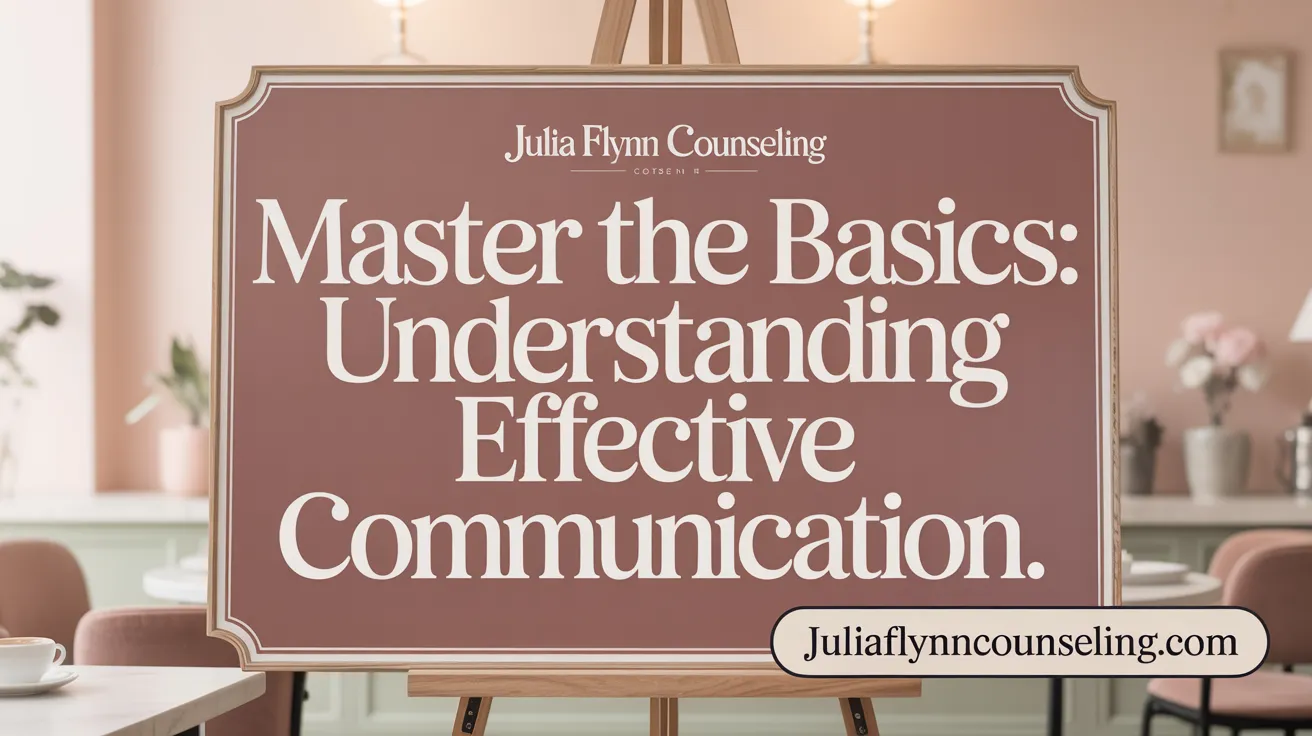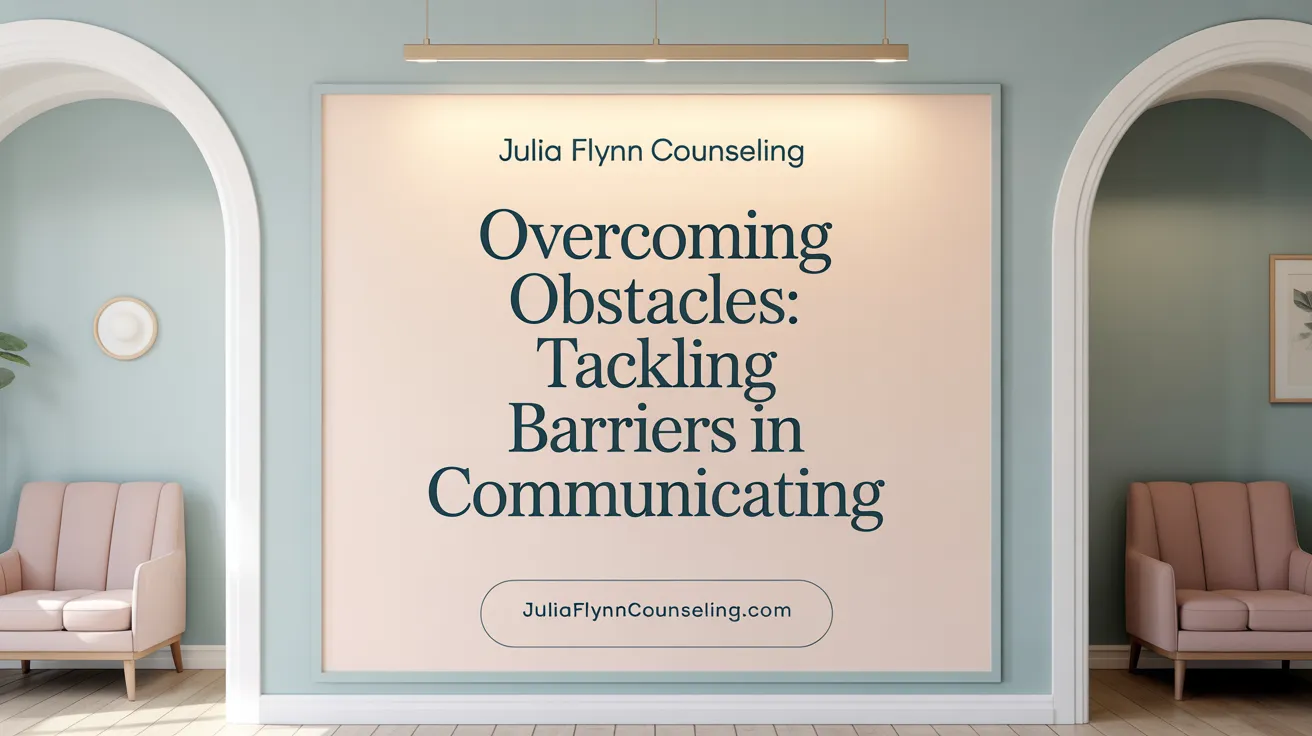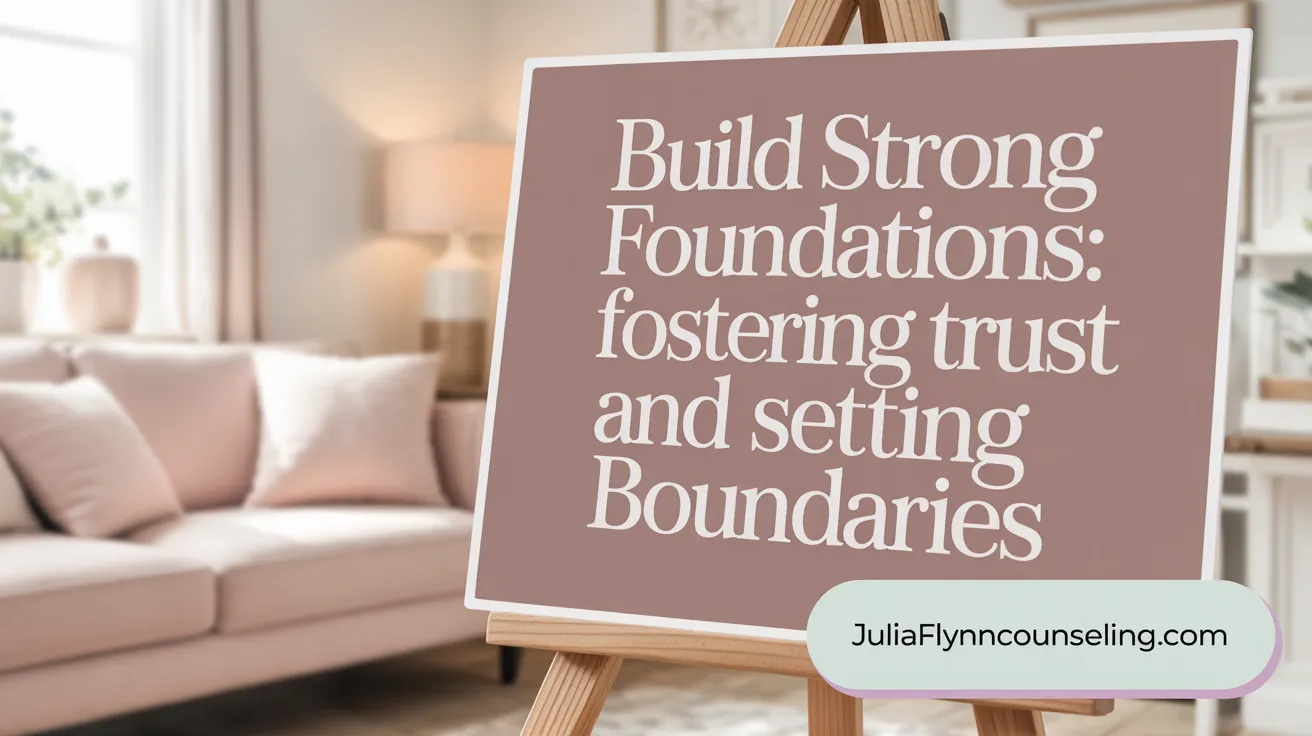The Crucial Role of Communication in Personal Relationships
Understanding the Importance of Effective Communication
Effective communication goes beyond merely exchanging words; it involves recognizing the emotions and intentions behind messages. This depth of understanding is vital in personal relationships, as it fosters trust, respect, and deeper connections. When communication is clear and empathetic, it creates a supportive environment where all parties feel heard and valued. Techniques such as active listening—fully focusing on the speaker and responding thoughtfully—play a significant role in enhancing this process.
Communication’s Impact on Mental Health and Relationships
Strong communication skills contribute positively to mental health by reducing feelings of isolation and frustration that arise from misunderstandings. Healthy communication patterns, which include honesty, empathy, and assertiveness, help manage conflicts constructively and prevent emotional distress. Additionally, expressing emotions openly and setting boundaries protects emotional well-being and supports personal growth. Ultimately, establishing open and honest dialogue strengthens relationships, improves emotional resilience, and promotes overall social and emotional health.
Understanding the Foundations of Effective Communication

What is Effective Communication?
Effective communication is more than just exchanging words; it involves understanding emotions in communication and intentions behind the message. It enables us to express our feelings, needs, and experiences clearly while being receptive to others. This deeper comprehension fosters stronger connections, builds trust through communication, and promotes healthier social and emotional well-being.
Verbal and Nonverbal Elements of Communication
Communication incorporates both verbal and nonverbal components. Verbal communication is the use of language and words to share information, while nonverbal communication includes facial expressions, gestures, tone of voice, eye contact, and posture. These nonverbal signals add emotional context and can reinforce or contradict verbal messages. Aligning verbal and nonverbal cues is essential to prevent misunderstandings and build trust.
The Role of Active Listening and Empathy
Active listening is a cornerstone of effective communication. It means fully focusing on the speaker, acknowledging their feelings, interpreting emotional cues, and providing thoughtful feedback. Techniques such as maintaining eye contact, avoiding interruptions, and reflecting back what is heard greatly enhance understanding.
Empathy complements active listening by allowing us to emotionally connect and genuinely understand another person's perspective. Together, they create a safe space for open dialogue, reduce conflicts, and strengthen relationships. For further strategies, see Using Effective Communication to Support Mental Health Wellness.
By mastering these foundational elements—understanding intent, supporting verbal messages with nonverbal signals, practicing active listening, and demonstrating empathy—we create meaningful, supportive, and lasting connections in our personal relationships.
Breaking Down Barriers: Common Challenges in Communication

Stress and Emotional Challenges
Stress and intense emotions can cloud our ability to communicate effectively. When overwhelmed, people might struggle to convey their thoughts clearly or listen attentively. Managing these feelings by pausing, taking deep breaths, or using humor can help maintain calmness and clarity, making conversations more productive and less confrontational (Managing stress for better communication).
Negative and Inconsistent Body Language
Body language — including facial expressions, eye contact, gestures, and tone of voice — plays a powerful role alongside verbal messages. Negative or mixed signals, such as avoiding eye contact or crossing arms while speaking kindly, may confuse or discourage others. Consistency between words and body language fosters trust and helps prevent misunderstandings (Matching verbal and nonverbal cues, Importance of body language and tone of voice).
Lack of Focus and Distractions
Distractions, multitasking, or simply drifting attention during communication often lead to missed information and misinterpretations. Active listening, demonstrated by facing the speaker, maintaining eye contact, and providing reflective feedback, enhances focus (Active listening techniques, Active listening in relationships). Creating a supportive environment free from interruptions encourages open and meaningful exchanges (Creating positive emotional environments).
Recognizing and addressing these common barriers helps build stronger connections and encourages empathy and understanding in personal relationships (Building stronger partnerships through communication, Improving communication in relationships.
Essential Skills for Enhancing Personal Communication
What are effective active listening techniques?
Active listening is more than just hearing words; it requires full attention and understanding of both verbal and emotional cues. Key techniques include:
- Maintaining eye contact to show engagement without staring intensely. Learn more about the importance of eye contact in communication.
- Avoiding interruptions to allow the speaker to express themselves fully.
- Reflective feedback such as summarizing or paraphrasing what was said to confirm comprehension. Explore active listening techniques for deeper insights.
- Using affirming gestures or verbal acknowledgments like nodding or saying "I see." Discover the role of nonverbal communication.
- Being empathetic by recognizing the speaker’s feelings and responding sensitively. See how empathy in communication enhances interactions. These practices help create a safe space, encouraging open dialogue and trust in relationships.
How do assertive, passive, and aggressive communication differ?
- Assertive communication expresses thoughts and feelings honestly and respectfully, balancing self-needs with the rights of others. It involves using "I statements" and clear boundaries. Learn about the benefits of assertive communication.
- Passive communication tends to avoid confrontation and suppress personal needs, often leading to misunderstandings and resentment.
- Aggressive communication prioritizes self-needs at the expense of others, often using blame or hostility which can damage relationships. Developing assertiveness boosts self-esteem and decision-making while fostering healthier, more honest interactions. Additional guidance on assertiveness in relationships can be helpful.
Why is setting and respecting boundaries important?
Boundaries define what is acceptable in relationships to protect emotional and physical well-being. Establishing clear limits helps prevent unrealistic expectations and reduces stress. Respecting boundaries shows mutual care and maintains trust. Communicating boundaries assertively while being open to negotiation supports a balanced, healthy relationship dynamic. For more, see tips on setting healthy boundaries and building healthy relationships.
What role does emotional intelligence play in communication?
Emotional intelligence is the ability to recognize, understand, and manage your own emotions, while also empathizing with others'. It underpins effective communication by:
- Helping regulate impulses and respond calmly,
- Enhancing empathy to better interpret feelings and nonverbal cues,
- Supporting conflict resolution by managing reactions and understanding differing perspectives. Cultivating emotional intelligence leads to deeper connections, reduced conflicts, and improved overall relationship satisfaction. Learn more about the role of emotional intelligence in communication, emotional intelligence in communication and its impact on healthy communication.
Nonverbal Communication: The Silent Language that Shapes Relationships

Why Are Facial Expressions, Gestures, and Tone Important?
Nonverbal communication includes facial expressions, gestures, and tone of voice, which convey emotions and intentions beyond words. These silent cues often express feelings more accurately than verbal messages alone, helping to deepen understanding and empathy in relationships. For more details, see Effective communication and Importance of body language and tone of voice.
How Can Nonverbal Cues Be Aligned with Verbal Messages?
Aligning body language and tone with what is being said verbally builds trust and avoids misunderstandings. For example, maintaining eye contact and a calm tone when expressing concern reassures the listener, while mixed signals can create confusion or mistrust. Practicing consistency in verbal and nonverbal communication fosters respect and emotional safety. Learn more about Matching verbal and nonverbal cues and Interpreting Non-Verbal Cues.
Why Is Cultural Sensitivity Important in Nonverbal Communication?
Cultural backgrounds influence the meaning of gestures, expressions, and personal space, so what is respectful in one culture may differ in another. Being aware of these cultural differences prevents misinterpretation and promotes inclusive, compassionate communication. This sensitivity is essential when building relationships across diverse backgrounds, allowing for richer and more effective interactions. Explore Cultural differences in communication and Culturally competent communication.
Managing Conflict Through Constructive Communication
What are healthy conflict resolution strategies?
Healthy conflict resolution involves several key practices that help maintain respect and understanding between partners. These include staying focused on the present issue, avoiding blame, actively listening to each other's perspectives, and responding with empathy. Using soft start-up techniques during discussions and agreeing on communication styles can also reduce tensions. Taking time-outs if emotions escalate and returning to the conversation later prevents conflicts from worsening. For more details, see Managing conflicts through communication and Managing conflict in relationships.
How can "I statements" improve communication during conflict?
"I statements" are a communication tool that allow individuals to express their feelings and needs without assigning blame. For example, saying "I feel frustrated when..." rather than "You always..." helps reduce defensiveness in the partner and fosters a safer space for open discussion. Using "I statements" supports clarity and encourages mutual understanding by highlighting personal emotions rather than accusing the other. Learn more about this technique at Effective communication in relationships and Using I Statements in relationships.
Why are empathy and validation important in resolving conflicts?
Empathy—understanding and sharing the other person's feelings—and validation—affirming those feelings as legitimate—are essential for constructive communication. They help partners feel heard and respected, reducing frustration and resentment. Active listening techniques, like the LARA method (Listen, Affirm, Respond, Add), ensure both parties feel understood. This nurturing environment helps build emotional closeness and supports collaboration to find mutually beneficial solutions. For examples and strategies, see Empathy in communication and validation and Healthy Relationships through Communication.
When should couples consider seeking professional help?
Sometimes conflicts persist despite best efforts, or communication patterns become destructive, such as through passive aggression or silent treatment. In these cases, seeking help from trained professionals like couples counselors can be beneficial. Professionals provide guided support to improve communication skills, resolve underlying issues, and foster healthier relational dynamics. Early intervention often prevents escalation and helps restore trust and intimacy in the relationship. Further information is available at Seeking help from trained professionals and Building stronger relationships through effective communication.
Building and Maintaining Trust through Open Dialogue and Boundaries

What is the Role of Trust and Accountability in Relationships?
Trust forms the foundation of all strong relationships. It grows when partners consistently show honesty and integrity, fostering a safe space for openness. Accountability—taking responsibility for one's actions and mistakes—is vital in rebuilding or maintaining this trust. When individuals own up to errors and strive to make amends, it nurtures personal growth and reinforces faith within the partnership.
For more insights, see building trust in relationships, effective communication, and building stronger relationships through communication.
How Do You Set Healthy Emotional and Physical Boundaries?
Healthy boundaries protect emotional and physical wellbeing by clearly communicating what is and isn’t acceptable. Setting these boundaries requires self-awareness and assertive communication to express needs respectfully. Boundaries act as a form of self-care, preventing undue stress, burnout, and resentment. They might include limits on personal space, time for self-care, or emotional topics that require sensitivity.
Learn more about setting healthy boundaries, assertiveness and communication, and personal communication skills for relationships.
Why Are Mutual Respect and Responsibility Important?
Mutual respect means honoring each other's boundaries, feelings, and values, even during disagreements. This respect helps prevent conflicts from escalating and fosters a collaborative spirit. Shared responsibility involves both partners actively contributing to the relationship’s health by communicating openly, listening actively, and addressing issues constructively. Together, respect and responsibility create a balanced environment where both feel valued and supported.
Additional reading on mutual respect and conflict resolution, effective communication in relationships, and healthy communication patterns is recommended.
Open dialogue is the bridge that connects trust and boundaries, enabling partners to express their needs, concerns, and feelings safely. Consistent, respectful communication paired with clearly established boundaries strengthens relationships, promoting emotional safety and shared commitment. For strategies on open dialogue and communication, effective communication benefits, and assertive communication benefits, explore these resources.
The Power of Positive Connections and Supportive Communication
How does expressing gratitude and recognizing others strengthen relationships?
Expressing gratitude and recognizing the strengths of others not only uplifts the person receiving the appreciation but also strengthens the bond between individuals. Brief supportive interactions built on appreciation create positive emotional environments that foster trust and deepen connections. Regularly acknowledging others’ contributions and qualities nurtures mutual respect and encourages continued positive behavior.
What role do acts of kindness play in building positive connections?
Acts of kindness, whether planned or spontaneous, act as powerful gestures that enhance feelings of support and belonging. Small kindnesses can create moments of joy and comfort, strengthening the fabric of relationships. These actions demonstrate care and consideration, reinforcing emotional closeness and improving overall relationship quality.
How can we effectively support loved ones with mental health challenges through communication?
Supporting loved ones facing mental health challenges requires compassionate communication that includes good listening skills and empathy. Reflective listening and using calm, nonjudgmental language help create a safe space for sharing. Structured approaches, such as the LEAP model (Listen, Empathize, Agree, Partner), guide conversations to build trust and encourage cooperation with treatment goals.
Why is validating emotions and experiences important in communication?
Validation acknowledges the feelings and experiences of others as real and important, fostering understanding and emotional safety. By affirming emotions without judgment, individuals feel heard and respected, which reduces feelings of isolation and enhances relationship satisfaction. Validation is a cornerstone of empathetic communication, especially when supporting someone through emotional struggles, as outlined in effective empathy and validation communication skills.
Together, these positive communication practices enhance emotional well-being, deepen trust, and promote resilience within relationships by creating a dependable foundation of support and mutual care.
Leveraging Communication to Support Mental Health and Wellbeing

How Does Communication Provide Emotional Support and Reduce Stigma?
Communication plays a vital role in emotional support by enabling people to express their feelings and needs clearly. Open and honest dialogue fosters understanding and trust, which are crucial for mental wellbeing. Using respectful, person-first language when discussing mental health helps reduce stigma and creates a safe environment for those struggling. Encouraging conversations that normalize mental health challenges allows individuals to feel less isolated and more understood. For more on Tips for stigma-free communication and Using effective communication to support mental health wellness, visit the linked resources.
What Is the Role of Self-Talk and Internal Dialogue?
Self-talk is an internal communication process where individuals process emotions and recognize unmet needs. Positive self-talk and self-reflection can improve self-esteem and emotional resilience. By acknowledging and verbalizing feelings internally, people can better manage difficult emotions such as stress or depression. This awareness supports overall mental health and prepares individuals to communicate effectively with others. Related insights can be found in Communication—the key to good mental health and Effective communication, healthy communication, emotional intelligence.
When Should You Seek Professional Help and Resources?
Seeking professional assistance is important when communication difficulties persist or mental health challenges become overwhelming. Therapists and counselors offer safe spaces to explore emotions and learn effective communication strategies. Resources such as Employee Assistance Programs (EAP), support groups, and specialized interventions provide additional support. Professional guidance often includes learning motivational communication techniques like the LEAP model, which builds trust and collaboration in mental health support. For detailed communication strategies with professionals, see Communicating with a loved one who has a mental illness and the Counselor and disaster response team role.
How Can Technology and Teletherapy Enhance Communication?
Technology-based solutions, including teletherapy in mental health and digital platforms, have expanded access to mental health services. These tools support communication by integrating reminders, easy-to-use interfaces, and seamless connections with therapists. Teletherapy particularly benefits those with busy lifestyles or geographic barriers, as detailed in teletherapy in mental health and teletherapy in mental health. Digital communication tools also facilitate homework adherence and personalized interventions, strengthening therapeutic relationships and improving treatment outcomes, technology-based solutions for therapy homework and Teletherapy in Mental Health describe. Learn more about teletherapy in mental health.
Understanding and leveraging effective communication—both internally and externally—can significantly promote emotional support, reduce stigma, and enhance mental health care access and quality. For broader strategies on Effective communication and Improving communication in relationships, consult these comprehensive resources.
The Ongoing Journey of Effective Communication
Commitment to Improving Communication
Effective communication is not a one-time achievement but a continual commitment. Cultivating this skill requires dedication to understanding others deeply and expressing yourself clearly. It's essential to remain open to learning and adapting as you encounter diverse perspectives and challenges.
Continuous Practice and Self-Awareness
Developing better communication involves continuous practice and heightened self-awareness. Regularly reflecting on your emotions, intentions, and reactions enhances your ability to connect authentically. Mindfulness exercises and honest self-assessment can help identify habits that support or hinder your interactions.
Embracing Empathy, Respect, and Vulnerability
At the heart of effective communication lies empathy—truly understanding and valuing others' feelings and experiences. Accompanying this with respect and the courage to be vulnerable fosters trust and openness. Using techniques like active listening and 'I' statements promotes honest dialogue while minimizing defensiveness.
Building Stronger, Healthier Relationships
When practiced consistently, these communication qualities build stronger bonds in all relationships. They encourage emotional closeness, reduce conflict, and create supportive environments where everyone feels heard and valued. Embracing this ongoing journey nurtures both personal growth and meaningful connections with others.
